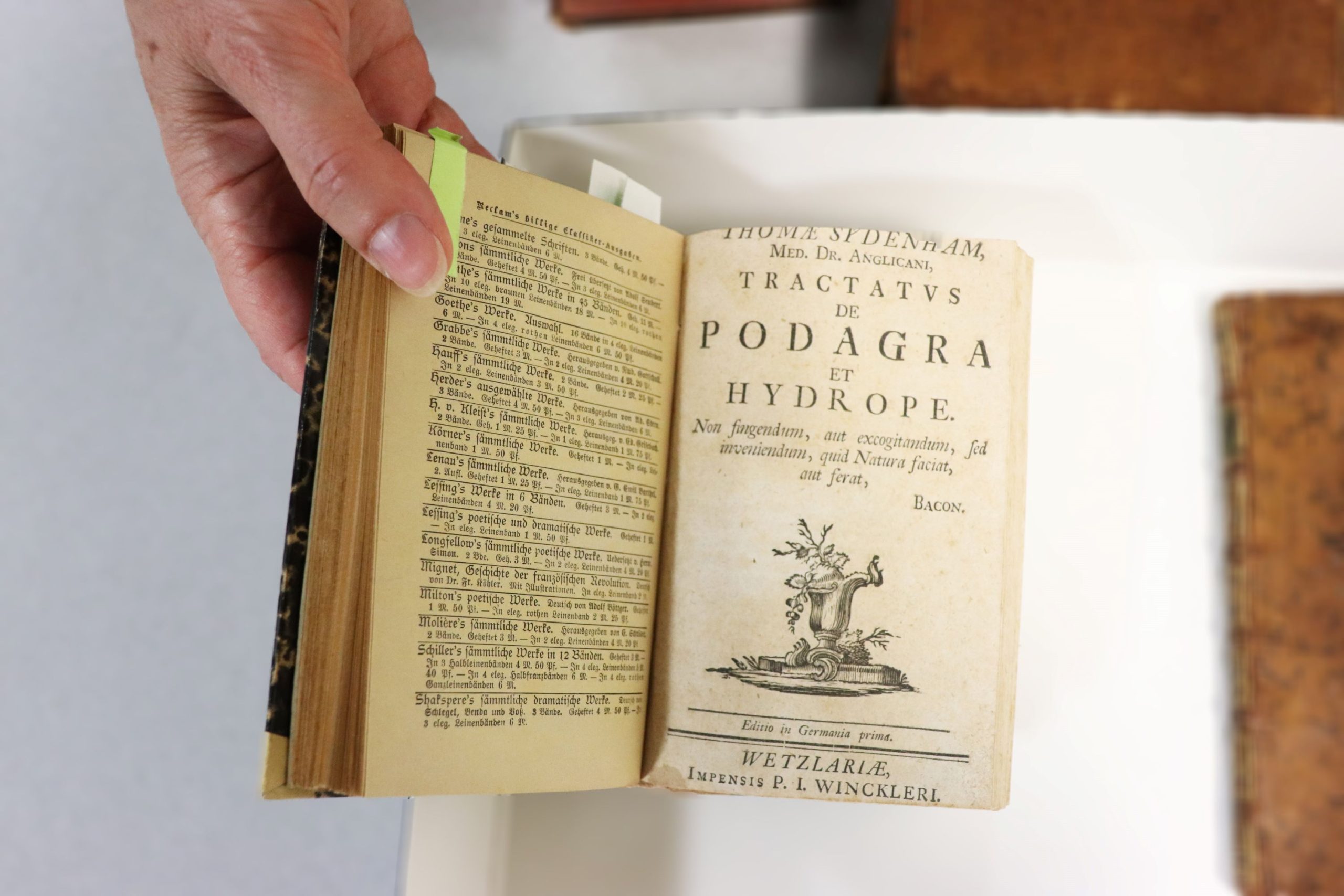
A generous gift is coming to the Rare Book Room at Falk Library. Dr. Thaddeus Osial is donating his extensive library of nearly 150 books on gout and rheumatism, which will expand and enhance Falk Library’s existing collection on the subject. When combined with current HSLS holdings, including the library of Dr. Gerald Rodnan, the incoming donation from Dr. Osial will cement the gout and rheumatism collection as the largest subject collection in the Rare Book Room.
Falk Library started to receive books from Dr. Thaddeus Osial this summer. There are several very rare and unique items among the first group of donated books. The first of those to be placed in the limelight is a medical classic – Thomas Sydenham’s Tractatus de podagra et hydrope. It is the first German edition published in Wetzlar, Germany, around 1770. The donated book, in Latin, was published by Philipp Jacob Winckler (1721-1792) almost 100 years after the original London edition of 1683 (which is also in our collection). It was not translated into German until later. It is a curious copy, printed on a low-quality paper in the second half of the 19th century and bound with three other titles, completely unrelated by subject, author, or place of publication. During the binding process, the binder had to trim Sydenham’s book more excessively in order to fit its original slightly larger format, resulting in minor loss of text. However, according to the OCLC database, this German edition from the Osial collection is the only copy in the United States!

This is truly an important work in the gout and rheumatism collection. Hippocrates described podagra in the fifth century for the first time. Later other physicians discussed it, too. Galen, Avicenna, and Paracelsus wrote about it, but nobody understood the differences between podagra, rheumatism, and other joint diseases until Sydenham’s Tractatus de podagra et hydrope (1683).
Sydenham distinguished podagra from rheumatism and described it as a separate disease. He gained experience observing the sick, and, in addition, he himself was a sufferer of podagra, so his description of an acute attack of podagra is unparalleled. Sydenham’s treatment focused on localized agents to stop the attack and methods to influence the whole body to fight the illness (he recommended moderation in eating, abstinence from alcohol, and physical activity). His approach became the classic treatment for podagra for the next 200 years.
~Małgorzata Fort